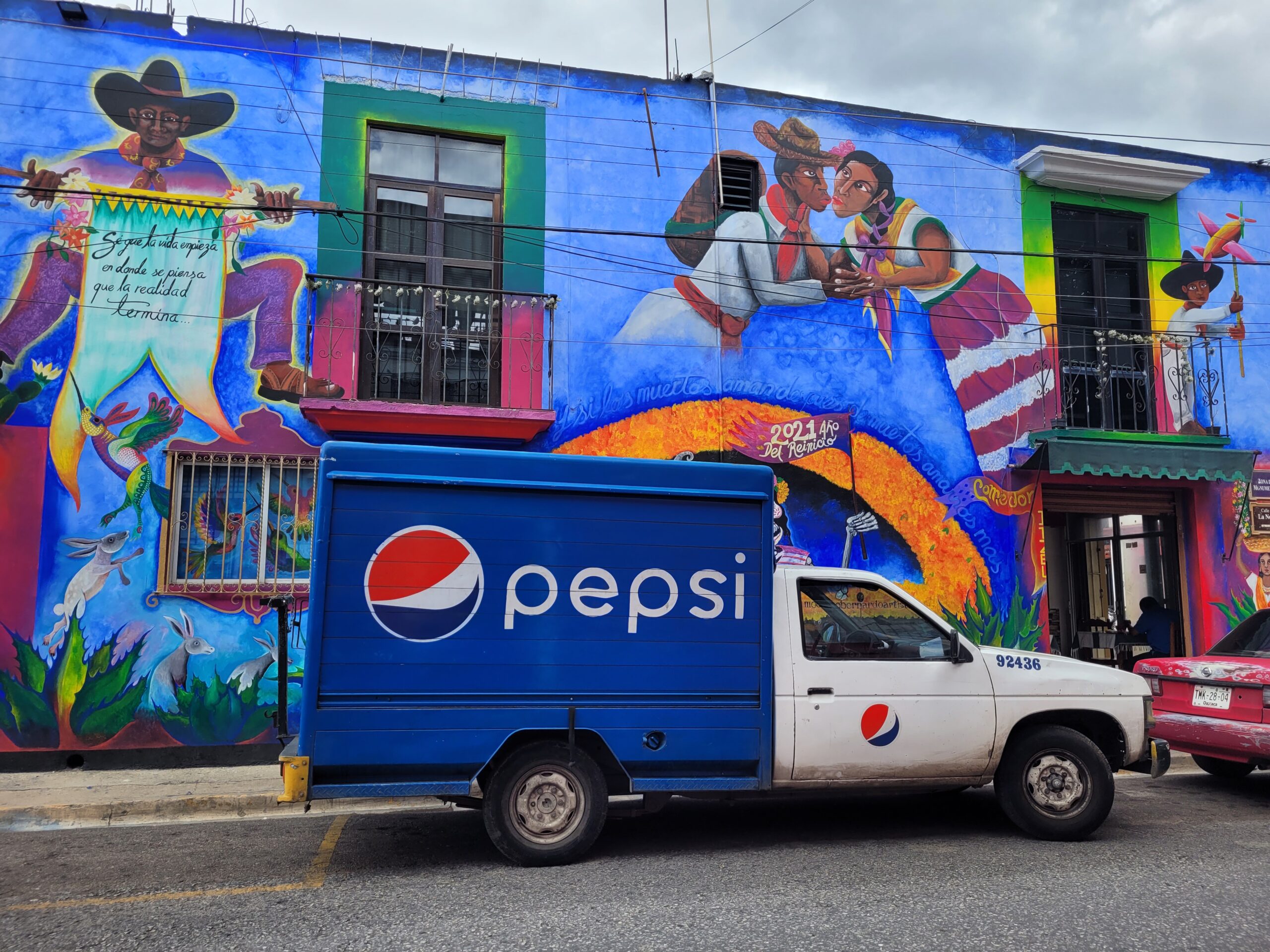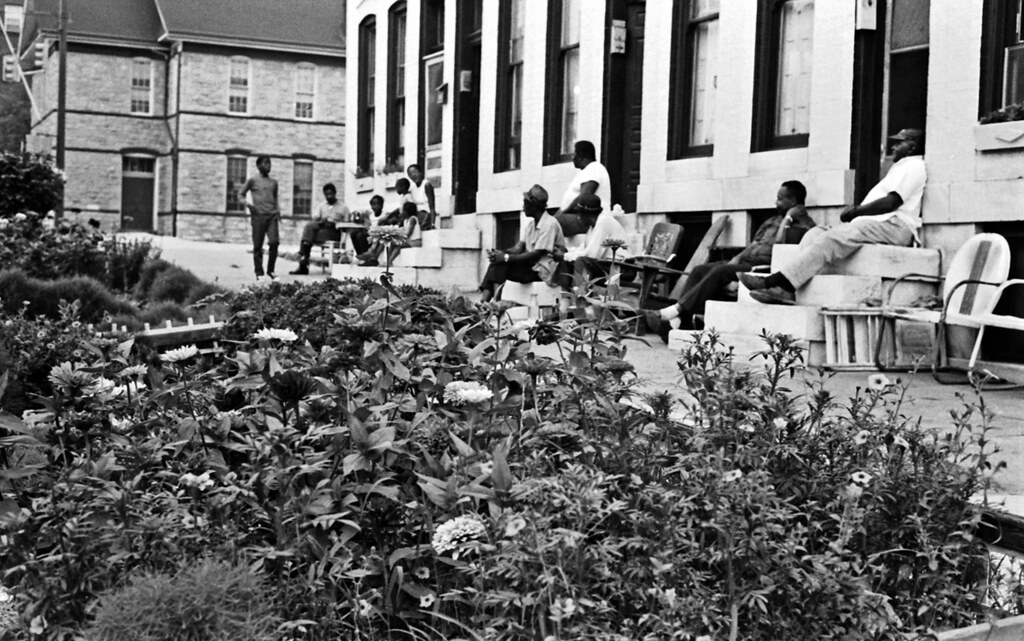
May / 16 / 2022
By: Aoife K. Pitts, Benjamin Trost, Nathaniel Trost, Ben Hand, Jared Margulies[1] University of Alabama, United States
Throughout a semester-long introduction to the field of political ecology, our class turned to Paul Robbins’ notion of the “hatchet” and the “seed” to categorize the goals of the field. Exploring this metaphor, we felt compelled to consider its potential within an expanded view of how racial capitalism structures socio-environmental relations. The hatchet points to political ecology’s commitment to dismantling systems of oppression embedded in racial capitalism, while the seed suggests the constructive pursuit of freedom, sustainability, and care. After reading a series of case studies, we felt our hatchets were well-sharpened and our eyes attuned to the structural inequities not only in the geographically diverse locales we had read about, but also in our state, our town, and our university. As the semester wound to a close, we read a series of more recent interventions entwining the black radical tradition and abolition with political ecology. We were inspired by a new sense of political ecology’s ability to not only diagnose inequities and harms, but to propose and enact novel interventions. The ideas we explored through these works resonated with us as cutting and vital critiques, helping us to imagine abolition within situated ecologies. To expand on Robbin’s “hatchet” and “seed,” we propose the “seed bomb” as a useful metaphor for thinking about the way that abolition ecologies intervene in, and destabilize, existing political-ecological regimes.
During the Coronavirus pandemic in the Spring of 2021, our political ecology class met on the campus of the University of Alabama in Tuscaloosa, Alabama, which sits today on Choctaw and Creek lands. This short intervention is intended to take stock of some first encounters with the field of political ecology, and its future trajectories as encountered within the context of a Southern public university in the United States that continues to grapple with (and often fails to grapple with) its own history and complicity in slavery, the plantation economy, racial segregation, and indigenous dispossession. As students in this environment, we became interested in the frameworks of feminist, urban, and finally, abolition ecology – frameworks we found to be the most critical and important to us within a wider political ecology curriculum. Collectively, we set out to write an intervention building from Robbins’ (2020) pedagogical framework of political ecology’s “hatchet” and the “seed”, terms he uses to describe both the cutting edge and productive political potential of political ecology as a field and community of practice, which we describe below.
We characterize our intervention through the “seed bomb.” Our seed bomb aligns itself with the work of abolition ecology and related disciplines as a pedagogical tool, a metaphor, and a collection of practices. Our essay shows some of the ways this idea emerged and how we have thought with the seed bomb as we were introduced to new ideas in political ecology. As students, many of whom were exposed to political ecology for the first time, we began our search for stories, analyses, and ways of living that might challenge colonial, white supremacist, and capitalist systems of domination. Taking this abolitionist orientation, we use the metaphor of a “seed bomb” to make explicit the liberatory stance we think should be at the heart of political ecology. In this intervention we primarily draw upon sources discussed together over the course of our semester, and a few others that we pursued individually after the class ended. Our intervention is therefore not a comprehensive literature review or survey of work on abolition ecology or related approaches within political ecology. Instead, it is a place- and syllabus-based pedagogical encounter with political ecology and effort of collaborative, classroom learning and writing.
Image 1. Seed Bomb
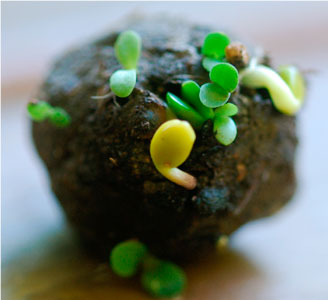
Our initial primer to political ecology was Paul Robbins’ (2020, third edition) textbook, Political Ecology: A critical introduction. This text was paired, complemented, and eventually replaced by works from a variety of contemporary and past political ecology scholars. A key facet of Robbins’ text that our class gravitated towards and contended with throughout the semester was what he described as the “hatchet” and “seed” of political ecology. As Robbins (2020: 97) writes, “…political ecology is a tradition that aggressively dismantles other accounts [of social and environmental change] (wielding its intellectual hatchet), while making space for, and nurturing, other possibilities (planting intellectual and practical seeds).” By this we understood Robbins to mean how works of political ecology produce important critiques of existing forms of structural inequality, oppression, and dispossession that in turn shape environments in ways that produce “winners” and “losers,” while also suggesting or enacting pathways towards more emancipatory horizons. We saw this time and again, for instance, in who wins and who loses when conservation projects evict the Maasai from their land in the name of wildlife conservation (e.g. Weldemichel, 2020), or why the poisoning of the water in Flint, Michigan disproportionately affected black communities (Ranganathan, 2016).2 But as Robbins (and others) have pointed out (e.g. Walker, 2007), where political ecology has long excelled at the hatchet, much of the work across political ecology gives less attention to the seed-work that can reveal pathways towards environmental justice and the dismantling of forms of structural oppression. We imagine this “seed” work as necessary to build and imagine different futures that move beyond marginalization, reproductions of violence, and environmental injustices (Sultana, 2021).
We began to wonder more and more as a class about these seeds in political ecology and how they might be better germinated. We concluded the semester by reading a series of what we felt were especially important interventions, what Heynen (2016; 2018) and Heynen and Ybarra (2021) propose as abolition ecology. Abolition ecology, Heynen and Ybarra (2020: 22) write, “build[s] on the environmental justice movement’s definitive call to liberate the environment as places we live, places we work, and places we play” in developing political ecological analyses that specifically center race and the violence of white supremacy in the fight for racial and intersectional liberation. Abolition ecology draws especially on the black radical tradition and the works of Ruth Wilson Gilmore on abolition geography (2007; 2017), alongside W.E.B. DuBois (2013 [1935]), Clyde Woods (1998), and others. In describing the activity of abolition ecology, Heynen and Ybarra (2021: 27) write “[a]bolition ecology seeks to build intuitions and processes that are explicitly focused on the political ecological imperatives of access to fresh air, clean water, sufficient land, amelioration of toxic chemicals, and beyond.” Critique (the hatchet) is implicit in the activity of abolition ecology, with its explicit concerns with revealing and analyzing the deep and present-day interconnections of the plantation economy, racial injustice and inequality, white supremacy, and the prison-industrial complex. However, we also read the orientation of abolition ecology as a subfield as foundationally creative and centered on liberation. Scholars like Heynen, Ybarra, and Gilmore provoked our class to not only examine the racialized inequalities evident at home in Alabama, but to imagine ways to create new spaces of resistance and to support others in their space-making within a Southern institution that continues to reproduce the harms of white supremacy. In learning from these texts, we were left inspired to nurture a germinating abolition ecology in our own place.
During our class discussions and what has followed since, many of us noted that abolition ecology felt like it had much to contribute to the seed work of political ecology – the work of building futures beyond the confines of white supremacy and racial capitalism. This speaks to a form of critique that actively constructs and empowers new identities as a way of moving past the construction of victimhood, as well as more sensitively and meaningfully engaging with trauma in political ecology research (Moulton et al., 2021). What better example is there of such discussions than the US South? A place that can be critiqued as a site of profound racism as well as the center of multifarious resistance and incredible cultural diversity. In this light, and in thinking with Gilmore (and subsequently, Heynen and Ybarra) about freedom “as a place” (Gilmore, 2017: 227), we found that as much as abolition ecology represents a vital seed for political ecology scholarship to confront white supremacy and identify where intersectional difference can foster coalitional organization, it simultaneously produces an important critique of structures of oppression that is more than the sum of its parts. Abolition ecology is more than a sharp hatchet or a germinating seed; it is a seed bomb.
These seed bombs of practices and ideologies within environmental movements extend beyond academic circles at universities or what might be labelled as ‘political ecology.’ The frameworks we learned in class are elucidated well in the bestselling book Braiding Sweetgrass by Robin Wall Kimmerer (2013), a scholar and member of the Citizen Potawatomi Nation. Although Kimmerer (2013) does not describe her work through the lens of political ecology or abolition, she encourages readers to reimagine their relationship to the living world and asks us to consider our roles in environmental destruction and the racial injustices that often accompany it. Kimmerer argues that for progress towards environmental justice to be made, perspectives must shift beyond the simplistic, traditional concepts of conservation. In doing so, Kimmerer calls attention to a common ethic amongst different indigenous communities: cycles of reciprocity, gratitude and compassion for the ecosystem and those who compose it. While not stated explicitly, we might consider how Kimmerer’s work introduces abolition ecologies of a kind by laying bare the injustices that occur when humans are “cleaved” from the environment and each other (Mei-Singh 2021:76). While weaving together stories of humanity and natural phenomena, Braiding Sweetgrass becomes a powerful seed bomb thrown into academic and nonacademic communities alike, suggesting that compassion for the natural world and those around us is a powerful tool for combating climate change and environmental injustice. Kimmerer suggests reciprocity and gratitude are pathways for learning that we see as having a place in the work of abolition as well. Reading Kimmerer through the lens of abolition clarifies how the fight for environmental justice is also a fight for liberation. Centering diverse communities’ voices and land rights might help mitigate the creation of carceral geographies, while simultaneously challenging the dominant socio-environmental order. This hatcheting of existing conservation methods enacted through containment and elimination is in part what our class found so refreshing as well as challenging towards the end of our semester, as a more radical trajectory for political ecology in practice.
Kimmerer argues that the alarming trajectory of climate change, natural disasters, and accompanying environmental injustices show that many in the Global North often take too much, with little gratitude or reciprocity, with little regard for those generations that will follow. As Mei-Singh notes (2021), communities that practice the ethics Kimmerer supports so strongly – those with socio-ecological relationships built on sustainability, abundance, kinship, and redistribution – pose a threat to colonial powers. Thus, these populations are often forcibly removed from their land and resources, ensuring that carceral and colonial geographies may persist. However, moving towards freedom as a place for all requires radical restructuring of spaces of conservation, access, and control. While radical environmental – and thus social and political change – can seem daunting, Kimmerer offers us perhaps one of the most valuable seeds for germination moving forward: not simply a change in how we treat the world, but a change in how we view ourselves and each other in the context of the world. By viewing humankind as a part of an environmental community in need of compassion, gratitude, and care, we can plant new seeds of reciprocity and protection. Kimmerer writes, “Reciprocity is a matter of keeping the gift in motion through self-perpetuating cycles of giving and receiving” (2013: 165). Perhaps a worldview of this nature could help bring many closer to experiencing freedom as a place, as Gilmore imagines.
As a learning community we recognize there are important critiques that forms of indigenous knowledge, such as that which Kimmerer (2013) shares from the Potawatomi Nation, are onto-epistemologies rooted in place that are not necessarily intended to travel as universalizing kinds of knowledge. Nor does indigenous knowledge easily align (nor should it) with dominant knowledge systems. “Grafting” indigenous knowledge into non-indigenous knowledge and knowledge-making practices, as Cree scholar Cash Ahenakew describes (2016: 324), can be its own form of colonial violence. As Ahenakew writes (2016: 324), “Grafting… can further contribute to the elimination of Indigenous peoples as distinct Indigenous peoples both in their relationship with the state, in their relation to the land, and in terms of the perceived worth of their knowledge.” Reading Kimmerer through the lens of abolition, while demonstrating some of the creative potential we found in reading other work through the lens of abolition ecology, also speaks to certain tensions and challenges. In particular, more work remains to create spaces of learning, critique, and solidarity between communities of scholars, activists, and organizers invested in both decolonization and abolition as political projects, and the kinds of knowledge we draw on in that pursuit (e.g. Tuck and Yang, 2012; Garba and Sorentino, 2020; Curly et al. 2022).
Taken literally, seed bombs have several key sites of origin. In Japan, seed bombs are known as Tsuchi Dango, meaning ‘Earth Dumpling’; they have ancient origins and were popularized in the now classic book One Straw Revolution by Masanobu Fukuoka (2009 [1975]). Fukuoka incorporated their use into his revolutionary farming methods, as Dunlap (2020) reviews. But seed bombing also has important origins in the 1970s and with the guerilla gardening movement (Lamborn and Weinberg, 1999). This includes efforts to reclaim abandoned private lots and land in urban centers like New York City by ‘bombing’ these spaces with balls made of seeds – most commonly native wildflower and/or prairie grass seeds – mixed with some combination of clay and compost. Seed bombs are commonly thrown into privately enclosed spaces, and in coming into contact with sufficient water and light, can help to spontaneously produce gardens in spaces of dispossession, slumlording, and structural neglect. Seed bombs can be hurled over chain link fences protecting vacant lots in various states of deterioration due to the woeful neglect of predatory landlords. They can be chucked into the ruins of post-industrial toxic spaces, and they can return important ecological hope to spaces diligently abandoned through the constant shifting of capital. The act of throwing seed bombs is a direct action intended to disrupt unjust property relations.
Seed bombs – in their very small and incremental ways – help to do the literal and metaphoric work of opening up cracks in the pavement of cities rocked by histories and cycles of redlining, mortgage crises, racism, and gentrification. While throwing seed bombs does not prevent the perpetuation of harmful cycles of development, seed bombs can serve as building blocks – small reminders in communities that resistance is possible, and that space, the right to grow, and the ability to have a fruitful relationship with the environment is possible. They speak – both metaphorically and practically – to what Dunlap (2020: 990) recently suggested might be envisioned as an insurrectionary political ecology, or the emergence of “an anti-authoritarian political ecology of resistance… to invigorate a political organizational praxis aiming to subvert socio-ecological catastrophe.” However, the introduction of new metaphors into political ecology must be done in such a way that it does not contribute to the abstraction of the real-world goals around which abolition ecology structures itself. As Tuck and Yang (2012) show us, white settler academics (in particular) tend to superficially adopt the language of various critical frameworks while losing sight of the true goals of projects such as decolonization, transformation (e.g. Bluwstein, 2021), or in our case, abolition.
Throughout the development of this article, we wondered about the value of introducing more metaphorical language into these discussions around an emergent abolition ecology. Robbins’ use of the “hatchet” and the “seed” create categories under which the work of political ecology can be organized. Robbins’ framing was an important pedagogical tool for us to parse through the various subfields of political ecology. It was also a determinative lens which helped produce our understanding of political ecology. The seed bomb builds from this dichotomy, and aligns with the recent call by Cavanagh (2021) for a renewed emphasis on the dialectical relations of the hatchet and the seed as interlinked metaphors for political ecology. As Cavanagh (2021: 1) writes, “…a political ecology fit for purpose in the coming decades will need to deploy the hatchet of intellectual critique just as proficiently as it encourages the planting of various seeds in the form, inter alia, of diverse transformation hypotheses, programs, or illustrative pathways.” The seed bomb as we imagine it aims at providing space for projects that do not fall neatly into Robbins’ categories, while also playing with the use of more specifically storied metaphors from which to build pedagogical categories. As Alhojärvi and Sirviö (2018: 2) write in their own response to the hatchet and seed metaphor, “…texts-as-hatchets will be needed as long as there are texts….Yet, we have too often counted on seeds to appear and sprout with the invisible help of friendly winds and assiduous critters, assuming such happenstances to be unworthy of textual caretaking.” Following Donna Haraway’s thoughts on the work of Marilyn Strathern, we believe that “it matters what stories we tell to tell other stories with; it matters what knots knot knots, what thoughts think thoughts, what descriptions describe descriptions, what ties tie ties” (2016: 12). We suggest the seed bomb as a set of stories, a metaphor, and a category for thinking through projects like abolition ecology. We invite others to use the seed bomb metaphor as a way of developing connections among disparate fields and what we see as abolition ecology’s interwoven destructive, emancipatory, and liberatory practices. We hope that this contribution of the seed bomb functions as a pedagogical tool (as it has for us) to imaginatively think through the activity of abolition ecology to promote action in line with the stories from which this metaphor springs.
Returning to literal seed bombs, we also wish to also express some necessary caution and concern. Without care and intention, seed bombs can be coopted by the very processes they seek to respond to. Urban “greening” projects, for instance, meant to respond to blight and abandonment and the flourishing of communities, can also aid the acceleration of divestment/abandonment/re-investment so central to the core processes of uneven development and gentrification (Smith, 2010). Greenpoint, Brooklyn offers such an example: this traditionally working-class Polish neighborhood is being upended by developers, taking advantage of its proximity to Manhattan and subway connections, displacing its former residents. However, legacies of extreme pollution and toxicity, and the desire to remediate the lived environment, have also produced an opportunity for disparate groups to unite to counter the legacy of industrial pollution that has plagued the neighborhood since the 19th century. As Curran and Hamilton (2012: 1028) show, the desirability of green spaces in a city, both spontaneous and planned, need not only benefit gentrifiers, developers, speculative landlords, and capitalist interests, revealing “…the potential for new spaces of politics for sustainability, broadly conceived with social justice as a central tenet, opening up around new strategic territorial and class alliances and divisions.
“Read in this light, a desire for “greening” or fostering flourishing urban environments need not only be equated with a politics of gentrification and displacement, even if that is often the case. At the same time, efforts like ‘guerilla gardening’ are often less transgressive and more allied with corporatist development and ‘greening’ strategies than such efforts often purport to be (Adams and Hardman, 2014). Seen in this light, there is nothing to suggest that literal acts like ‘guerrilla gardening’ cannot be just as easily co-opted as related practices like urban gardening that often are mobilized to mask the legacies of urban neglect and abandonment. But, as the case of Greenpoint shows, neither must this co-optation be read as an inevitability. In confronting powerful interests and structures like white supremacy and racial segregation at work in the city, there is nothing de facto ‘liberatory’ about practices like hurling seed bombs that are just as likely to support rather than destroy or slow processes like gentrification which are especially aimed at harming black, marginalized, and working-class communities. Intention, commitment, and coalitional organization in building freedom-as-place are therefore central to the work of abolition ecology as we understand it.
Our class was composed of students from different disciplinary backgrounds, yet all dedicated to fighting environmental wrongdoing. After reading two articles a week on various topics related to environmental change and inequality, we quickly realized that a commitment to environmental stewardship can look radically different through the lens of political ecology. Topics like ecological restoration or international development and aid, subjects that in previous classes were painted as progressive and productive, became at times malignant tools used to disempower individuals, communities, and even entire countries. Reading from Tuscaloosa, itself a place violently rooted in exploitation, racial segregation, marginalization, and settler colonialism, we began to critique our present, and imagine futures where socio-environmental conditions no longer perpetuated systems of oppression. With this newfound orientation towards ecological concerns, some students began to feel disheartened: how could we – a class full of aspiring biologists, urban planners, artists, political scientists and geographers – possibly build towards an equitable future when there are such deeply entrenched systems of inequality in our taken-for-granted relationships with the environment? In our final weeks of class, this concept of abolition ecology was an exciting – if daunting – approach that seemed to build from the critical orientation of political ecology yet doing something more. Through placing “antiracist, postcolonial and indigenous theory” (Heynen, 2016: 839) at the center of abolition ecology, the sharp critical edge of political ecology’s hatchet felt balanced by the discipline’s potential for sowing transformative seeds through critical analysis, and we hope, practice. With this approach, we saw socioenvironmental issues metaphorically blasted down to their foundations, exposing the skeletal structure of white supremacy and racial capitalism that have bolstered inequality and violence for centuries. The smattering of anti-racist and anti-colonial seeds left behind in this rubble seemed proof enough to us that with enough time and a determined commitment to liberatory struggle, there is hope in the tremendous effort to foster freedom as a place. It is for this reason, the radical belief in the ability to build a just future, that abolition ecology spoke so deeply to us. As we move forward in our various endeavors, we will seek out and nurture the growing sprouts of the seed bomb, steadfast in staying with abolition as a pathway out of the oppressive structures of white supremacy and racial capitalism that continue to shape the present.
[1]Students at the University of Alabama, United States, and Dr. Jared Margulies, Assistant Professor, Department of Geography. Email: jdmargulies@ua.edu. The authors would like to sincerely thank the editors at the Journal of Political Ecology and Grassroots for supporting our intervention, as well as a very helpful reviewer for comments on multiple former iterations of this article. This article’s origins are owed to initial discussions that took place involving a larger class of students enrolled in Political Ecology (GY 267) in the Spring of 2021 at the University of Alabama. Any errors remain our own.
[2] We recognize it has become mainstream practice in both academic texts and the popular press in the last several years to capitalize “Black” when referring respectfully to a diverse and rich culture of people with a shared history of ancestors from Africa brought to the United States against their will as enslaved people. While respecting this new convention, and the importance of discussion and debate in how to best practice and support antiracist politics in our writing, we follow the suggestion of Nicholas Whittaker that “Black” reasserts a definitional politics reproducing the very logics of antiblackness advocates of capitalization suggest they are responding to. As Whittaker (2021) writes in their important essay, “Behind the push to capitalize is the desire to define blackness, and it is a desire that I think we should be wary of. Any major conventional shift ought to be interrogated for its motivations and its implications. In this case, the shift has been touted as a radical (and antiracist) break from a (racist) past. But capitalization — the linguistic convention, but also the politics and theory behind it — is not new, and is indeed deeply anti-radical. Capitalization remains tied to what came before — to the conceptual framework and language of antiblackness — by its base and reductive impulse: by the desire to define.”
Adams, D., & Hardman, M. (2014). Observing guerrillas in the wild: Reinterpreting practices of urban guerrilla gardening. Urban Studies, 51(6), 1103-1119.
Ahenakew, C. (2016). Grafting Indigenous ways of knowing onto non-Indigenous ways of being: The (underestimated) challenges of a decolonial imagination. International Review of Qualitative Research, 9(3), 323-340.
Alhojärvi, T., & Sirviö, H. (2018). Affirming political ecology: seeds, hatchets and situated entanglements. Nordia Geographical Publications, 47(5), 1-6.
Bluwstein, J. (2021). Transformation is not a metaphor. Political Geography 90: 1-4. https://doi.org/10.1016/j.polgeo.2021.102450
Cavanagh, C. J. (2021). Limits to (de) growth: Theorizing ‘the dialectics of hatchet and seed’ in emergent socioecological transformations. Political Geography, 90, 102479. https://doi.org/10.1016/j.polgeo.2021.102479
Curley, A., Gupta, P., Lookabaugh, L., Neubert, C., & Smith, S. (2022). Decolonisation is a political project: Overcoming impasses between Indigenous sovereignty and Abolition. Antipode https://doi.org/10.1111/anti.12830
Curran, W. & Hamilton, T. (2012) Just green enough: contesting environmental gentrification in Greenpoint, Brooklyn, Local Environment, 17(9), 1027-1042.
Du Bois, W.E.B. (2013 [1935]). Black reconstruction in America: Toward a history of the part which Black folk played in the attempt to reconstruct democracy in America, 1860–1880. Transaction.
Dunlap, A., (2020). The direction of ecological insurrections: Political ecology comes to daggers with Fukuoka, Journal of Political Ecology 27(1), 988-1014. https://doi.org/10.2458/v27i1.23751
Garba, T., & Sorentino, S. M. (2020). Slavery is a metaphor: a critical commentary on Eve Tuck and K. Wayne Yang’s “decolonization is not a metaphor”. Antipode, 52(3), 764-782. https://doi.org/10.1111/anti.12615
Gilmore, R. W. (2007). Golden gulag. University of California Press.
Gilmore, R.W. (2017). Abolition geography and the problem of innocence. In Johnson, G. T. & Lubin, A. (Eds). Futures of Black Radicalism (p. 225–240). Verso.
Haraway, D. (2016). Staying with the trouble: Making kin in the Chthulucene. Duke University Press. Heynen, N. (2016). Urban political ecology II: The abolitionist century. Progress in Human Geography, 40(6), 839-845.
Heynen, N. (2018). Toward an abolition ecology. Abolition: A Journal of Insurgent Politics, 1, 240-247.
Heynen, N., & Ybarra, M. (2021). On abolition ecologies and making “freedom as a place”. Antipode, 53(1), 21-35. Fukuoka, M. (2009). The one-straw revolution: An introduction to natural farming. New York Review of Books.
Kimmerer, R. W. (2013). Braiding sweetgrass: Indigenous wisdom, scientific knowledge and the teachings of plants.
Milkweed Editions. Mei-Singh, L. (2021). Accompaniment through carceral geographies: Abolitionist research partnerships with Indigenous communities. Antipode 53(1), 74-94. https://doi.org/10.1111/anti.12589
Moulton, A. A., Velednitsky, S., Harris, D. M., Cook, C. B. & Wheeler, B. L. (2021). On and beyond traumatic fallout: unsettling political ecology in practice and scholarship. Journal of Political Ecology, 28, 677- 695. https://doi.org/10.2458/jpe.3051
Ranganathan, M. (2016). Thinking with Flint: Racial liberalism and the roots of an American water tragedy. Capitalism Nature Socialism, 27(3), 17-33. https://doi.org/10.1080/10455752.2016.1206583
Robbins, P. (2020). Political ecology: A critical introduction. John Wiley & Sons. Smith, N. (2010). Uneven development: Nature, capital, and the production of space. University of Georgia Press. Sultana, F. (2021). Political ecology II: Conjunctures, crises, and critical publics. Progress in Human Geography, 45(6), 1721-1730. https://doi.org/10.1177%2F03091325211028665
Tuck, E., & Yang, K. W. (2012). Decolonization is not a metaphor. Decolonization: Indigeneity, Education & Society, 1(1), 1-140.
Walker, P. A. (2007). Political ecology: where is the politics? Progress in Human Geography, 31(3), 363-369.
Weldemichel, T. G. (2020). Othering pastoralists, state violence, and the remaking of boundaries in Tanzania’s militarised wildlife conservation sector. Antipode, 52(5), 1496-1518. https://doi.org/10.1111/anti.12638
Wilson, P. L., & Weinberg, B. (1999). Avant gardening. In Lamborn Wilson, P. & Weinberg, B. (eds.). Avant Gardening: Ecological struggle in the city and the world, (p. 7-34). Autonomedia.
Whittaker, N. (2021). Case sensitive: why we shouldn’t capitalize ‘Black’. The Drift, 5, September 27. Stable access: https://www.thedriftmag.com/case-sensitive/
Woods, C. (1998). Development arrested: The Blues and plantation power in the Mississippi Delta. London: Verso.
19 / September / 2025
By: Taylor Steelman

19 / September / 2025
By: Eva Navarro
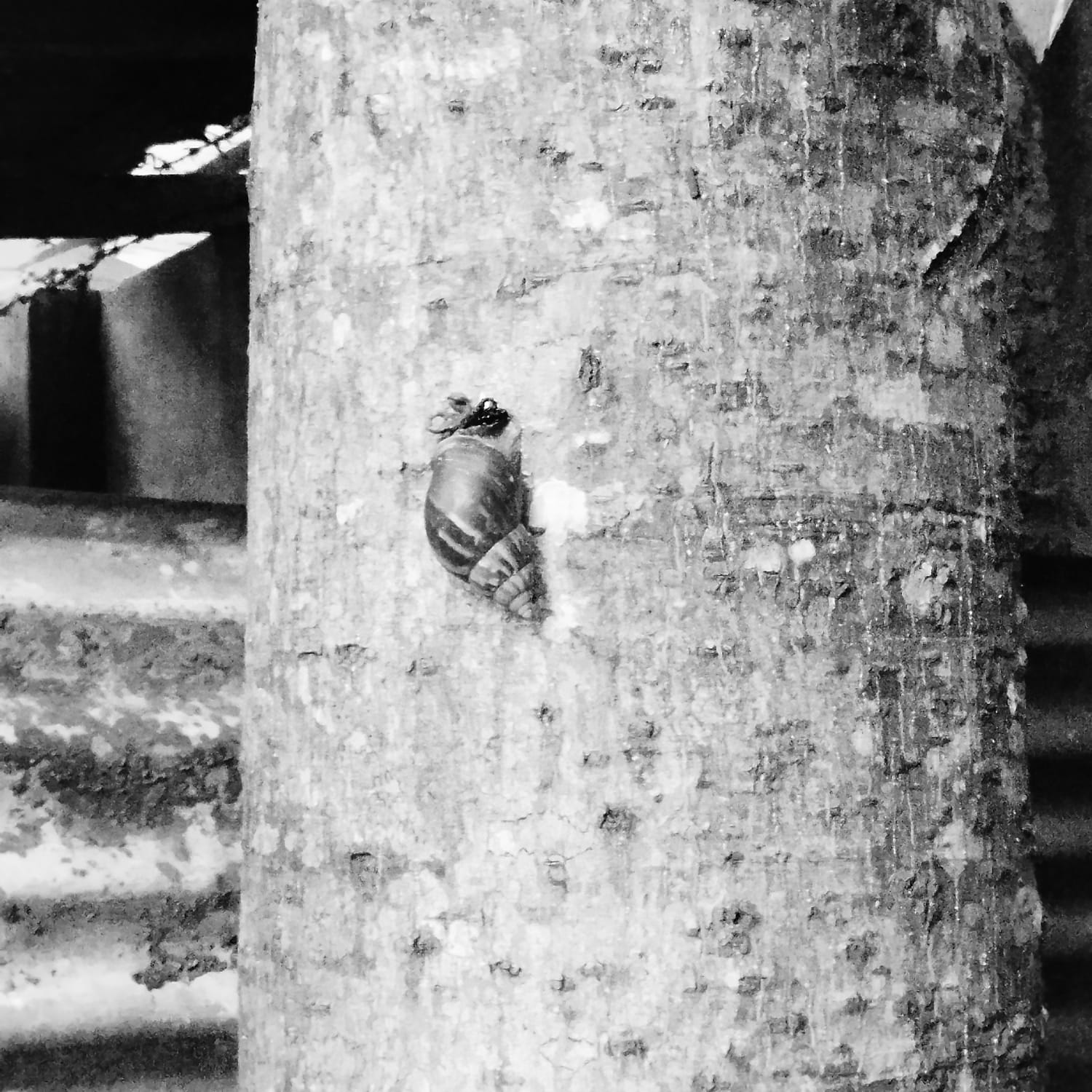
14 / June / 2025
By: Sarah Steinegger, Nora Katharina Faltmann
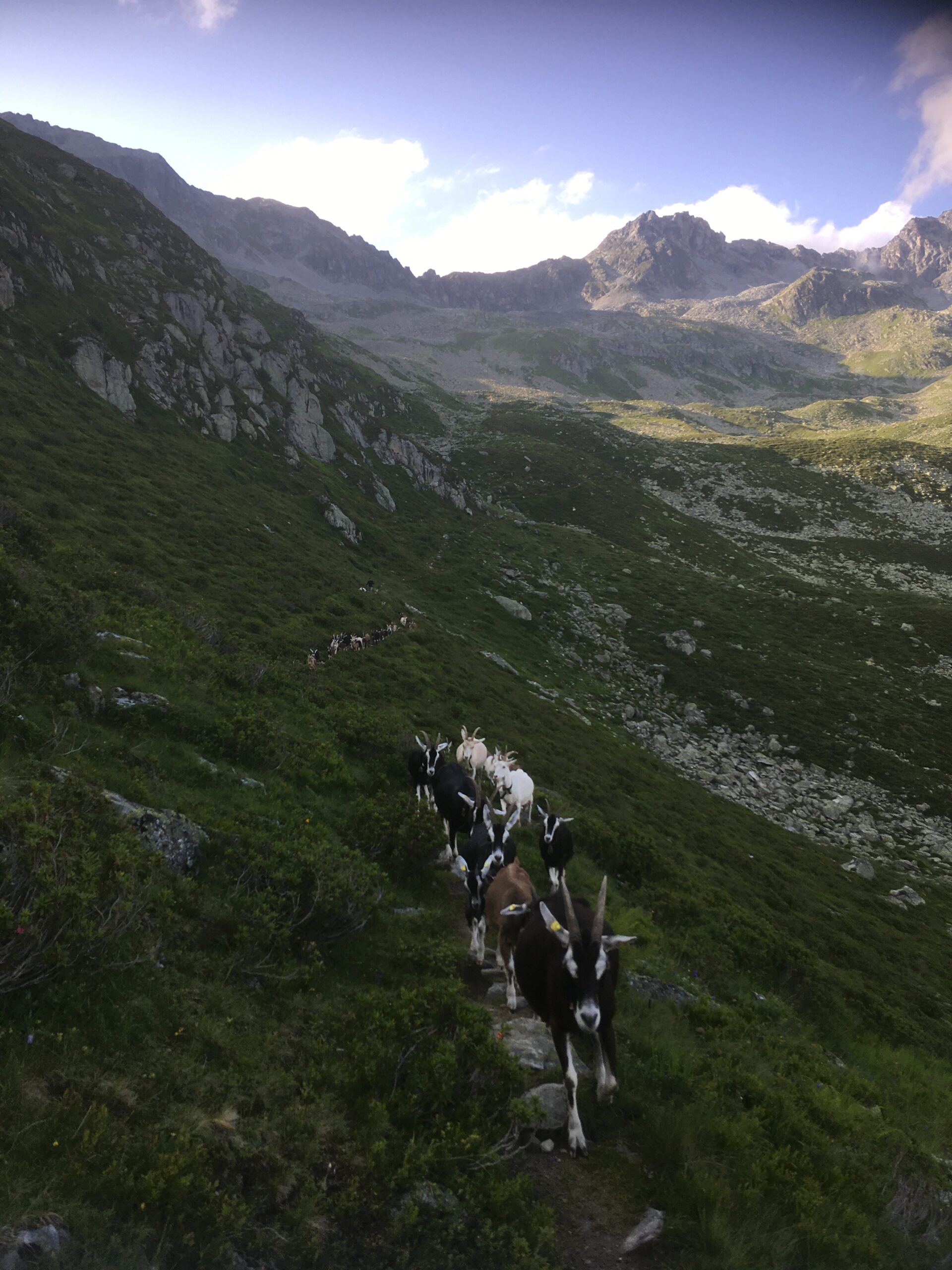
19 / March / 2025
By: Inea Lehner, Samira Amos, Philippe Mathys, and Johanna Jacobi

19 / February / 2025
By: Aisha Ismail
